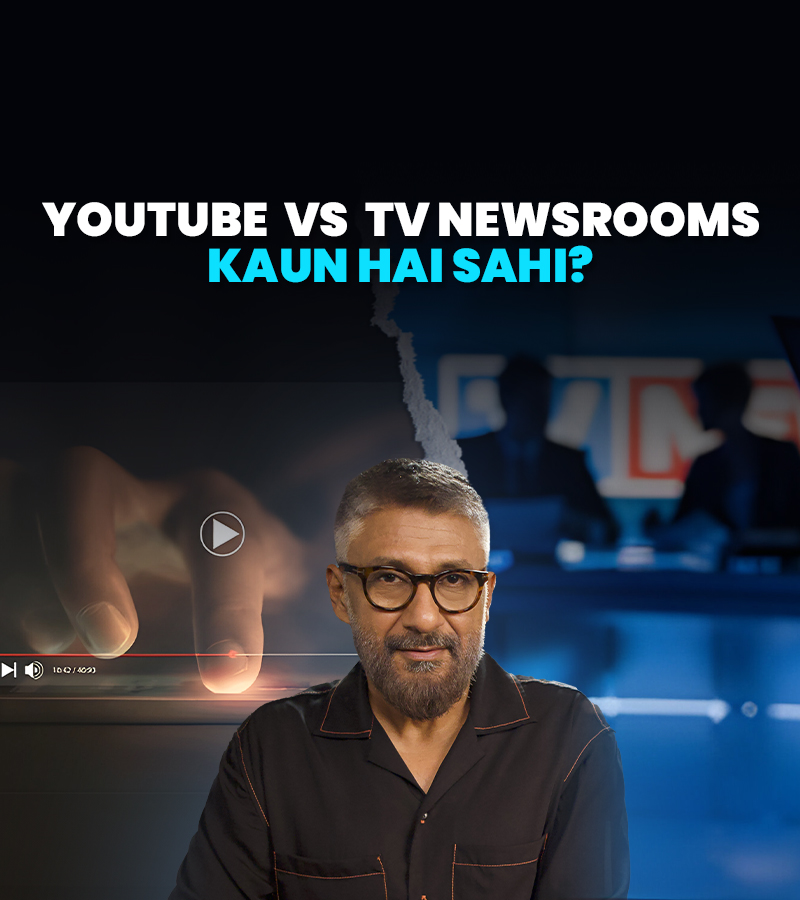

The Great Indian News Divide: YouTube vs. Traditional Media
Is your news feed biased? It’s time to take control and responsibility for your news consumption. Understand how both traditional media and YouTube are vying for your attention, and how you can navigate this landscape with critical thinking.
The Indian media landscape is in the midst of a significant transformation. The days of a few news channels dominating the national narrative are behind us. Today, YouTube news has emerged as a powerful contender, offering a multitude of voices and perspectives. This shift has given rise to an interesting trend: while traditional news channels are being widely accused of bias, YouTube, with its own potential pitfalls, is escaping similar scrutiny.
This blog delves into the reasons behind the growing popularity of YouTube for news consumption in India, explores the contrasting biases of both platforms and underscores the need for a more critical approach to consuming information. You have the power to discern the truth, regardless of the source.
Why YouTube for News?
A 2023 Reuters Institute Digital News Report found that 56% of Indian respondents used YouTube for news, compared to 39% who relied on traditional television news channels.
Several factors contribute to the rise of YouTube as a news platform in India:
Diversity of Voices: Unlike traditional media, which often leans towards a particular political ideology, YouTube offers many channels representing the entire political spectrum. This caters to a younger generation hungry for diverse viewpoints beyond the mainstream narrative.
Accessibility and Reach: With internet penetration on the rise, YouTube news is readily accessible on smartphones, making it ideal for a mobile-first audience. The platform’s vast reach also allows niche content creators to find a dedicated audience.
Control of the Narrative: YouTube allows creators to directly address their viewers, fostering a sense of intimacy and trust. This empowers them to frame the narrative and present their interpretations of events, bypassing the editorial filters of traditional media.
Freedom of Expression: Filmmaker Vivek Ranjan Agnihotri, whose films often challenge established narratives, is a prime example of someone who has leveraged YouTube to reach a wider audience and bypass potential censorship concerns.
These factors have resulted in a significant shift in viewership.
The Flip Side of the Coin: Bias on YouTube
While YouTube offers a diverse range of voices, it’s not without its own biases. Here’s a closer look:
Echo Chambers: The platform’s recommendation algorithm can create echo chambers, where viewers are primarily exposed to content that reinforces their existing beliefs. This limits exposure to opposing viewpoints and hinders the formation of well-rounded opinions.
Misinformation and fake news: The lack of stringent editorial oversight on YouTube allows for the proliferation of misinformation, particularly around politically charged topics. This can significantly impact public discourse and even lead to real-world consequences.
Sensationalism based on clickbait: The platform’s monetization model often incentivizes sensationalized content and clickbait headlines. This can distort the news cycle and prioritize outrage over accuracy.
The Challenge of Bias – A Two-Way Street
The accusations of traditional media bias are not entirely unfounded. Many channels have been accused of favoring the current government and stifling dissent. However, the lack of criticism towards YouTube’s potential biases creates a double standard.
Here’s why both platforms deserve scrutiny:
Traditional Media: The historical dominance of a few news channels allowed them to control the public narrative. Their alleged pro-government bias can limit public discourse and hinder accountability.
YouTube: The sheer volume of content on YouTube makes it difficult to discern credible sources from those peddling misinformation. Additionally, content creators with a specific political agenda might frame information to benefit their viewpoint.
Towards a More Informed Public
The rise of YouTube as a news platform highlights the need for a more critical-thinking approach to consuming information. Here are some tips:
Cross-check Information: Don’t rely solely on one source, whether a YouTube channel or a traditional news outlet. Cross-check information with credible news websites and fact-checking organizations. This will give you a sense of security and confidence in your understanding of the news.
Be Wary of Sensationalism: Be skeptical of headlines and content that evoke strong emotions. Look for factual reporting and in-depth analysis.
Consider the Source: Research the background of the YouTube channel you’re watching. Who is creating the content? What is their known agenda?
Develop Critical Thinking Skills: Don’t passively accept information. Learn to question what you see and hear and develop informed opinions.
By adopting a critical approach to consuming information, regardless of the source, we can navigate the complex media bias landscape and become more informed citizens.
The Future of Indian News
The rise of YouTube is a positive development for Indian democracy, as it promotes diversity of voices and challenges the monopoly of traditional media. However, it’s crucial to acknowledge and address the potential pitfalls of this platform. We can navigate the information age and ensure a healthy and vibrant public discourse in India by developing critical media bias literacy skills.






